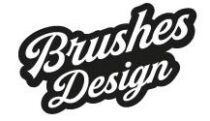This post is also available in: Español (Spanish) Português (Portuguese (Brazil))
If you’re a UX/UI designer—or simply want to create interfaces without coding—this guide is for you. Here, you’ll learn exactly how to create prompts in Stitch and export your designs to Figma (without writing a single line of code), from basic concepts to a practical step-by-step strategy you can use right away.
What is Stitch and Why Should You Try It?
Stitch (formerly known as Galileo AI) is an AI-powered UI design tool developed by Google. Its main feature is allowing you to generate components, layouts, and design systems from written prompts—like talking to a creative assistant.
Key advantages of using Stitch:
No coding or manual layout skills required.
You can create clean, modern interfaces from simple text descriptions.
Direct export to Figma, one of the most widely used tools among UX/UI designers.
Ideal for quick prototypes, concept testing, and interactive flows.
Step-by-Step: How to Create Prompts in Stitch and Export Your Designs to Figma
1. Create your Stitch account
Go to https://stitch.design and sign up with your Google account.
2. Write your first prompt
Stitch works like a conversational AI. For example, you might write:
“Design a landing page for a creative agency with a fixed header, three service cards, and a centered call-to-action. Minimalist style with sans serif font.”
The AI will generate a layout based on your description. The more precise your prompt, the better the result.
3. Customize your design (optional)
You can ask Stitch to adjust styles, fonts, or layout elements. For example:
“Change background to black and text to white.”
“Add a responsive hamburger menu.”
4. Export to Figma
Once you’re satisfied:
Click on “Export to Figma”.
Stitch will ask you to connect your Figma account. Grant the permissions.
Choose the destination file or create a new one.
Done! Your AI-generated designs will appear in your Figma workspace.
Tips for Writing Better Prompts
Prompts are the core of your design. The clearer you are, the more control you’ll have.
Practical tips:
Use short, direct sentences.
Specify layout, style, color palette, typography, and features.
Take inspiration from real-world designs.
Reuse successful prompts and adapt them.
Examples of effective prompts:
“Admin dashboard with dark sidebar, stat cards, and bar charts.”
“Recipe app with vertical scroll, featured image, and large buttons.”
Real Use Cases
Freelancers and solo designers:
Deliver functional mockups in minutes and accelerate your creative process.
Product teams:
Quickly test UI ideas without involving the development team.
Creative agencies:
Build fast and consistent design systems for multiple brands.
Stitch + Figma vs Traditional Design
| Feature | Stitch + Figma | Manual Design |
|---|---|---|
| Speed | Very High | Medium or Low |
| Learning Curve | Low | Medium to High |
| Controlled Creativity | Medium to High | Fully Custom |
| Best For | MVPs, Tests, Sketches | Final Projects |
Final Tips to Boost Your Workflow
Add Figmel: Want to move your Figma design into Elementor? Figmel is the ideal bridge.
Use component libraries: After importing into Figma, apply your design system.
Organize your favorite prompts: Keep a categorized list by project type.
